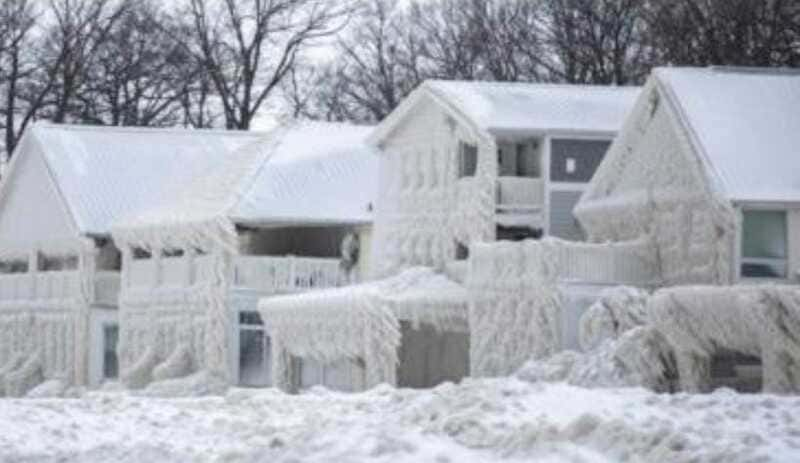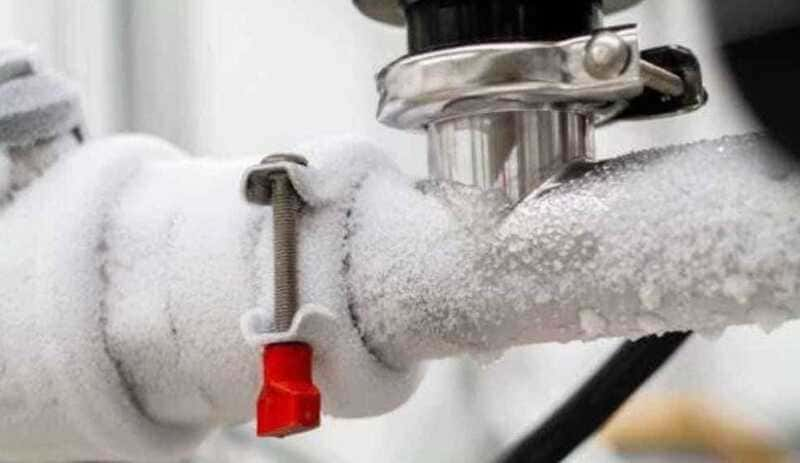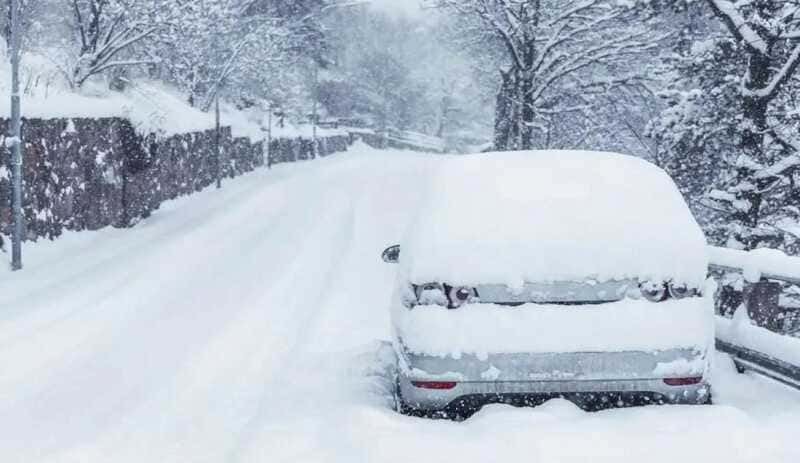Snowstorms can be beautiful and exciting, but they can also be dangerous and unpredictable. When a snowstorm approaches, it’s important to take steps to make sure your home is prepared for adverse weather conditions.
Proper preparation can not only help keep your home and family safe, but it can also help prevent costly property damage. In this article, we’ll discuss how to prepare your home for a snowstorm, from checking your heater to protecting your plumbing to preparing emergency supplies.

By following these tips, you can feel calm and confident knowing that your home is prepared to handle the next snowstorm.
Heater check.
One of the most important aspects of preparing your home for a snowstorm is making sure your furnace is working properly. This is especially important if you are expecting a storm that may last several days, as keeping your home warm and cozy is essential to your family’s safety and comfort.
Before the storm arrives, it is important to perform a complete heater check. First, make sure the fuel supply is full or has sufficient charge in the case of a backup generator. Next, start the heater and make sure it is operating properly. If the heater has filters, clean or replace the filters as necessary. Dirty filters can reduce the efficiency of the heater and increase the energy bill.

If your heater runs on gas, make sure there are no gas leaks. Common symptoms of a gas leak include a gas smell, wheezing pipes and yellow gas flames. If you suspect a gas leak, immediately turn off the shut-off valve and call a gas heater repair technician.
It is also important to clean the area around the heater. Dust, dirt and debris buildup can reduce the efficiency of the heater and increase the risk of fire. Make sure the heater has enough clearance around it to ensure adequate ventilation.
Prepare food and supplies.
It is important to prepare enough emergency food and supplies before the arrival of a snowstorm, especially if there is a risk of being homebound for several days. Here are some important items to consider when preparing your emergency food and supplies.
– Non-perishable foods: Make sure you have plenty of non-perishable foods, such as canned goods, grains, cereals, protein bars, dried fruits, nuts and dehydrated foods. These foods do not require refrigeration and can be stored for long periods of time.
– Drinking water: Make sure you have enough drinking water for at least three days. You can store water in clean, sealed containers, or you can purchase bottled water.
– Medications: Make sure you have sufficient supplies of medications for any medical conditions you or a family member may have. This includes prescription and over-the-counter medications.
– Emergency supplies: Make sure you have emergency supplies, such as flashlights, batteries, candles, lighters, blankets, warm clothing, first aid kits, basic tools and emergency radios.
– Other supplies: Consider including other important supplies, such as diapers, toilet paper, paper towels, detergent, garbage bags and pet supplies.
When preparing your emergency food and supplies, it is important to consider the number of people in your household and the potential duration of the snowstorm. It is also important to keep supplies in a safe and easily accessible place in case of an emergency. With proper preparation, you can be confident that your home and family will be ready for any emergency situation that may arise during a snowstorm.
Protect pipes and plumbing fixtures.
An important topic within the steps of how to prepare your home for a snowstorm is the treatment of pipes and plumbing inside the home. When a snowstorm is expected, it is important to take steps to protect the pipes and plumbing fixtures in your home to prevent freeze damage. Below are some tips to help protect your pipes and plumbing fixtures.

– Insulate pipes: It’s important to make sure your pipes are properly insulated before the storm hits. You can use duct tape, foam insulation or special pipe covers to help protect exposed pipes.
– Turn off water faucets: If you are leaving your home during the storm, it is advisable to turn off water faucets to prevent pipes from freezing and bursting. Make sure all pipes are completely drained before turning off faucets.
– Leave faucets open: Leaving faucets open slightly can help relieve pressure on pipes and reduce the risk of freezing and bursting.
– Protect plumbing fixtures: Be sure to protect plumbing fixtures, such as water meters and shut-off valves, from freezing and breaking. You can wrap them with insulation materials or cover them with a protective box.
– Heat the space: If possible, keep the space where pipes are located at a constant, warm temperature. You can do this by using portable heaters or by keeping the central heating on.
Secure windows and doors.
Another important step you should take to prepare your home for a snowstorm is to properly secure windows and doors to keep out the cold and snow. Here are some ways to seal and secure your windows and doors:
Install weather stripping: You can install foam or rubber weather stripping on the window or door frame to seal any gaps between the frame and the wall. This can help prevent cold air and snow from entering.
Use sealants: Silicone sealants or caulk can also be helpful in sealing cracks or gaps between windows or doors and walls. Apply the sealant to the problem areas and smooth it out with a putty knife.
Put up thick curtains: Thick curtains or blinds can help retain heat and keep snow from accumulating on windows. Be sure to close them at night and on cold, windy days.
Add weather-stripping on doors: Door weather-stripping can help seal any gaps between the door and frame, which can reduce the amount of cold air entering your home.
Secure locks and latches: Make sure all door and window locks and latches are working properly and lock securely to prevent cold air and snow from entering.
By properly securing your windows and doors, you can reduce the amount of cold air entering your home and maintain a comfortable temperature during a snowstorm. In addition, you can also save on heating costs and avoid problems such as snow accumulation inside your home.
Roof and gutter cleaning.
Another important step you should take in preparing your home for a snowstorm is to properly clean your roofs and water and sewer gutters. Here are some ways to make sure your home is protected from snow accumulation and the potential damage it can cause.
Remove snow from your roof: Snow accumulation on your roof can cause damage to your home, such as weakening the roof structure or causing leaks to form. Removing snow from your roof before it builds up too much can help prevent these problems. You can use a snow shovel or special roof rake to remove snow.
Clean gutters and gutters: Gutters and gutters can become clogged with snow and ice, which can lead to flooding and damage to your home. Be sure to clean them out before the storm and after the snow is gone. You can use a snow shovel or broom to clear gutters and drains.
Hire a professional: If you are not comfortable with roof cleaning or gutter and sewer cleaning, you can hire a professional to do it for you. Professionals have the experience and tools necessary to perform the task safely and efficiently.
Backup generator: have a backup generator in case of an extended power outage.
A snowstorm can cause power outages that can last for hours or even days. To make sure you have access to electricity and heat during these outages, you may want to consider having a backup generator. Here are some things to consider when purchasing and using a backup generator:
There are two main types of generators: portable and stationary. Portable generators are more flexible and can be easily moved from one location to another, while stationary generators are designed to be used in one place. Be sure to choose the type of generator that best suits your needs.
Generator capacity is measured in watts and determines how many appliances and devices it can power. It is important to choose a generator with enough capacity to meet your power needs. Be sure to calculate the amount of power you need and purchase a generator with sufficient capacity.
Stationary backup generators should be installed by a professional. In addition, it is important to perform regular maintenance to ensure that the generator is working properly when you need it.
It is important to use a backup generator safely to avoid injury or damage to your home. Be sure to read the instruction manual and follow all recommended safety precautions.
Car maintenance.
Before a snowstorm hits, it’s important to make sure your car is prepared for winter driving conditions. Here are some things you should do to prepare your car.

Worn or underinflated tires can reduce traction on snowy and icy roads. Be sure to check your tire pressure and consider switching to winter tires if you live in an area with heavy snowfall.
Make sure your car has enough antifreeze to keep your engine from freezing. It is important to check the level and quality of antifreeze before a snowstorm.
Brakes are critical in winter driving conditions. Make sure the brakes are in good condition and consider changing the brake pads if necessary.
Make sure the heater is working properly to keep you warm while driving in extremely cold conditions.
Lights are essential in low light and snowy conditions. Make sure all lights are in good working order and replace bulbs if necessary.
Include items such as a shovel, flashlight, blankets, spare batteries, bottled water and non-perishable food. These items can be essential in case of an emergency on the road.
Safety during and after the storm.
During and after a snowstorm, it is important to take steps to stay safe. Here are some things you can do to stay safe:
– Avoid hypothermia and frostbite: Dress in layers of clothing and be sure to stay dry to avoid hypothermia and frostbite. If you are outside, avoid sweating too much and keep your feet and hands warm with gloves, hats and thick socks.
– Remove snow safely: Use a proper shovel for snow removal and don’t try to lift too much snow at once. It is also important to avoid back injuries by bending your knees and lifting with your legs instead of your back.
– Know the dangers after the storm: After a snowstorm, there may be hazards such as broken branches, downed power lines and damaged roofs. Be sure to be aware of these hazards and avoid dangerous areas.
– Keep an emergency supply at home: Make sure you have enough emergency supplies in case of extended power outages or if you are unable to leave your home. This includes non-perishable food, drinking water, blankets and medical supplies.
– Have an evacuation plan: If you live in an area prone to flooding or avalanches, it is important to have an evacuation plan in case of an emergency. Know the evacuation routes and have an emergency kit ready to take with you.
Staying safe during and after a snowstorm requires careful planning and precautionary measures. Make sure you know the hazards and have a plan of action to stay safe and prepared.

